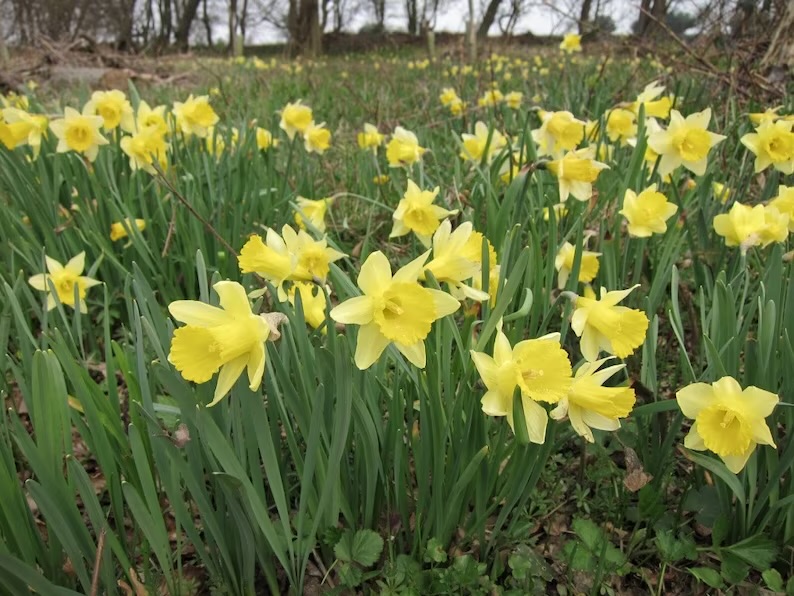By Dr. Curtis Varnell
Spring had arrived, the first sign being the daffodil emerging from the still cold Earth and raising its golden crown to capture warmth from a still distant Sun. My treasure hunting friend was ecstatic. Driving down old roads and forgotten lanes, he could easily spot the location of old home places by the dozens of daffodils that dotted the byways. On just one trip last week, he was able to locate a mercury dime, several ancient pennies, and a number of rusted knives. As he explained, every abandoned and deserted old home site is revealed each spring as the daffodils burst forth. Seeing the tremendous number of plants that arrive each spring, one wonders how a non-native plant became such a prevalent part of our landscape.
The daffodil (also called the jonquil or Narcissus) is a flower that originated in Spain and Portugal but has the ability to grow in many environments. The ancient Romans believed that that the flowers brought good luck and were also medicinal. They carried the bulbs with them as the conquered most of Europe and Asia and would plant them in memory of loved ones or comrades that had fallen in battle. In this manner, some of the earliest plants arrived in Britain where enterprising individuals saw the opportunity to raise them in large gardens and sale them to the public. They became extremely popular in the 13th-16thcentury and bulbs were commonly sold to people establishing flower gardens. The bulbs are easily stored and shipped so, when colonists came to America, they brought the flower along.
Check the plantations of Washington, Jefferson, and Andrew Jackson and a profusion of daffodils can be found in each flower garden. As American as apple pie, several of the variations of the original bulbs carried by the Roman legionaries are found across the United States.
As colonists pushed west, they took their favorite plants with them. My ancestors came first to Carolina, moved to Tennessee, and eventually to Arkansas. Each time they moved, along came the Crape Myrtle, the yellow forsythia, and the ever present daffodil. All three grew in profusion around my grandmother’s home. Each time she moved, she took “cuttings” from her plants and began her garden anew. My wife and I recently travelled back to the old home place and transplanted some of her plants to our new home- a piece of our family history that stretched generations back into our past.
For years, Americans have suffered through the cold and snow of winter waiting for the season to change. Nothing connotes the renewal of spring as dramatically as a field of daffodils swaying with the warm spring breeze.
Years ago, the poet William Wordsworth described that anticipation as he “wandered lonely as a cloud, floating on high o’er vale and hills….and saw a host, of golden daffodils.” A trip through the Ozarks in the spring exposes those old home places; place where adults once toiled, kids once played, and the daffodils still grow. Like him, when I see them emerge, “Then my heart with pleasure fills, and dances with the daffodils.”






